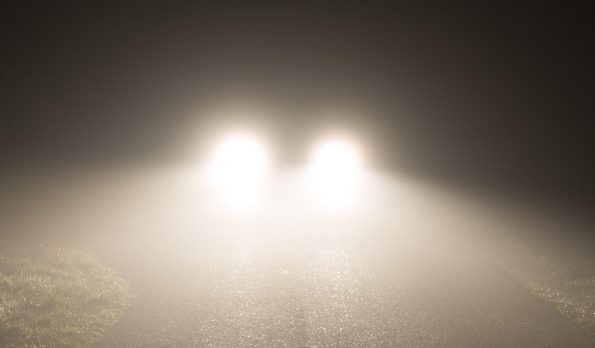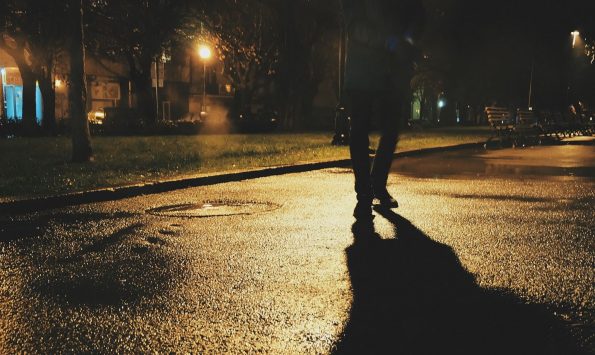As the sun goes down the colours gradually fade and darkness begins to place extra challenges for driving. Our main experience of the world is visual, so once this sense is dulled, we need to be sure we can react in time to hazards that appear. Driving at night is more tiring but there are things you can do to make it easier.
What makes driving at night more difficult?
Fatigue
Our bodies are hardwired to feel more sleepy once the sun goes down. If our regular routine is to go to sleep at a certain time, we will feel sleepy while driving at that time, too. Driving at night, especially on monotonous roads, leads to a much greater risk of falling asleep at the wheel. Driver fatigue is made worse by the fact that 9% of the adult population of Australia suffers from sleep disorders.
Animals
Many of our larger animals like to be active at dusks and into the night when it’s cooler but the problem is that you can’t see them as well. Countless kangaroos and wallabies are killed every week. A kangaroo can do a lot of damage, but so can deer, camels and wandering livestock. Hit a large roo on a motorbike and you may not survive.
Vision and visibility
Our colour vision is all-but non-existent at night. Headlights illuminate things in shades of grey without the clarity that comes with colour. Your full beam lights will illuminate the road around 30m ahead of you – at 100km/h, that’s about one second of travel time. Your high beam lights will give you about 100m, or four seconds of travel time at 100km/h.
Depth perception suffers, too. It’s harder to judge the distance of approaching vehicles especially if they have just one point of light, like a motorbike. Our peripheral vision is also affected.
As less information is coming into the eye, our reaction times are reduced and there is more mental strain; it’s said that 4-5 hours of night time driving has the same effect as 8 hours of daytime driving. You can learn fatigue management strategies by doing this course.
Being dazzled by approaching headlights is common. Keep your eyes to the left of the road to minimise the glare.

Pedestrians
Whether it’s people walking dogs or people stumbling home from the pub, if they are wearing dark clothing it’s almost impossible to see them until you are up close. It’s for this reason that many pedestrians are hit every year through lying in the road asleep. On Thursday, Friday and Saturday nights, drunk pedestrians cause extra headaches for motorists as they are more likely to walk out into the road without looking.

Ice and frost
Ice can form very quickly on damp roads in winter once the sun has gone down. If your vehicle has a temperature gauge for the external temperature, be cautious if it dips below 3 degrees Celsius.
Navigation
Landmarks and road signs are more difficult to see and your chances of getting lost are higher if you don’t know the area. Using a GPS is a good idea as it helps you stay focused on the road rather than squinting to see road signs. Detours are common on motorway routes at night due to roadworks being carried out while there’s less traffic. This means you’ll have to contend with roads that are narrower and perhaps unfamiliar to you until you can get back on the motorway.
Danger from other drivers
Other drivers may be dazzled by your headlights and they are experiencing the same issues of driving in the dark that everyone experiences. On the weekend, there will be more people driving who are under the influence of alcohol. Nighttime drivers can cause frustrations if they drive slowly or can’t maintain a consistent speed because it’s harder to overtake when your depth perception isn’t as good.
Fewer services
Fewer petrol stations and other places to stop and rest means that drivers can be tempted to drive on after they start to feel tired or when they really should stop to go to the toilet.
How to drive better at night
Mirrors
Your rearview mirror should have a dip function (manual) or might have an electronic photochromatic function that automatically dims the mirror if a vehicle is following.
Lights

Many cars allow you to dim your dashboard lights. Don’t use an internal light as your eyes adjust to this, meaning your visibility outside the car will be reduced.
Keep your headlights clean and know when to use your high beam lights without dazzling other motorists. Replace any bulbs that are blown.
Windows
Keep your windows clean to avoid the annoying diffraction that can reduce your visibility when other vehicles are driving towards you. Fill up your washer bottle so you have plenty of water to wash the windows with; at night, there are often more insects which can impact your lights and windscreen, and the windscreen washer often is linked to a headlight washer.
Other vehicles
Look to the left of the road when other vehicles are approaching rather than at their headlights. This will help you maintain your vision.
Resting
Don’t drive tired. Rest before you drive and take regular breaks.
Use other lights
Looking at where other vehicles’ lights are coming from will give you a clue to the direction of the road ahead and whether there is any traffic. You can also follow the taillights of the vehicle in front, although be careful you don’t follow them into danger.
Streetlights in rural areas are often positioned at t-intersections. Be aware of the change in light levels – it’s good in that you can see what’s happening at the intersection, but once you’ve gone past it, you’ll be back in the dark again.
Clothing
Nighttime is colder and this is especially relevant for motorcyclists. Don’t wear tinted glasses at night. You could try glasses which have an anti-reflective coating on them if you want to reduce glare.
